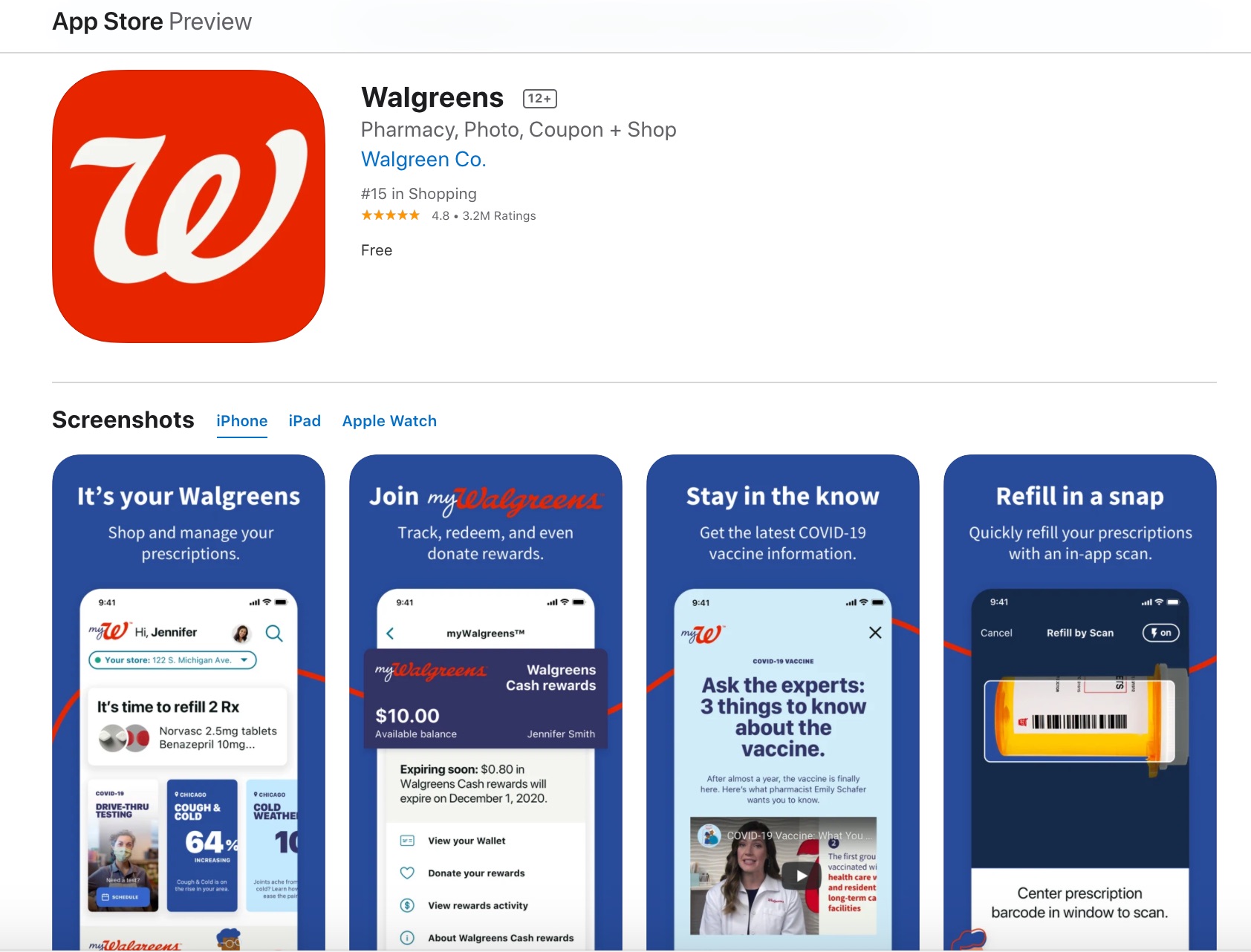While the COVID-19 pandemic disrupted many industries including tourism and food services, other industries like healthcare evolved during this time.
One of many growing industries is telemedicine, which saw exponential growth as patients were ordered to stay at home and were not able to visit their doctors for non-emergency services.
As a result, many people and providers who never planned to make the switch to telemedicine services found themselves doing so out of necessity, and the industry began to boom.
This gave rise to many new companies and providers, but we’ve compiled the best online doctor and medical services in 2022 all in one place.
Telemedicine Overview
Telemedicine, sometimes referred to as telehealth, has risen in popularity in recent years, but what is it exactly?
Telemedicine is the process by which people are able to visit with their doctors or other medical professionals remotely through the use of phone, video conference, and messaging services.
While telemedicine services have been tightly regulated for years, the COVID-19 pandemic caused a rapid increase in the availability of services thanks to newly loosened restrictions on the use of telemedicine services for the U.S. Medicare program.
Today, most commercial insurance companies offer telemedicine coverage as part of their benefits package, and new companies are popping up every day to join the popular trend of adding it to their health plans.
There are three main types of telemedicine services:
- Interactive: Interactive, or live, telemedicine occurs when patients speak with their doctor or healthcare provider in real time over video conference, phone, or messaging services.
- Remote: Remote telemedicine services are designed to monitor patients who use medical equipment at home to continuously collect information about their health, such as blood pressure monitors, heart monitors, and more.
- Storage: The most passive type of telemedicine is storage, which occurs when your physician provides your health information and medical records with other healthcare providers electronically.
The Rise of Telemedicine Use
The use of telemedicine services has been on the rise for years, but most people still continued to see their doctors in person prior to the COVID-19 pandemic.
That all began to change in March 2020 as the pandemic became widespread and many doctor’s offices closed to non-essential visits.
The Department of Health and Human Services found that of among 300 practitioners in a variety of specialities and primary care practices conducted in April 2020, only 9 percent of patient interaction was conducted via telemedicine services prior to the pandemic. By April 2020, the utilization of telemedicine services had increased to 51 percent.
After the pandemic, practitioners expect interest in telemedicine services to remain elevated as more patients have become comfortable using telemedicine services and now understand the convenience offered; the survey reported that the practitioners expected telemedicine utilization to remain at 21 percent after the end of the pandemic.
Telemedicine services are more popular among certain demographic groups than others. Nearly 70 percent of telemedicine visits in 2020 were for adults ages 18 through 49, and 63 percent of patients using telemedicine services were women. Children and older adults represent a comparatively small portion of the population utilizing telemedicine services.
Benefits of Telemedicine
While much of the rise in the use of telemedicine services has occurred out of necessity during the COVID-19 pandemic, there are also many benefits of telemedicine.
Convenience: Patients do not have to spend the time driving to the doctor’s office, parking, walking to the clinic, sitting in the waiting room, and waiting to see their doctor when using telemedicine services.
Your telemedicine visit can be conducted from your own home or wherever you happen to be, which might also mean that you don’t have to worry about arranging transportation or childcare.
Comfort: You’ll never find a doctor’s office or patient room on a list of the top 10 most comfortable places in the world. Telemedicine visits can be conducted from anywhere you feel comfortable, such as your bed or sofa.
Not only does this help you to feel better when you’re sick, it can also reduce the anxiety some patients feel around doctor’s offices and hospitals.
Reduced risk of contagious disease: With all of the sick people that enter a doctor’s office each day, there’s no amount of cleaning that can completely keep germs at bay. Telemedicine services help to prevent the spread of contagious disease, which is especially important for patients who are elderly, immunocompromised, pregnant or have chronic health conditions.
Improved assessment capabilities: The doctor’s office environment is sterile and a bit unnatural for most people, which can limit the effectiveness of the doctor’s assessment in some cases.
When visits are conducted via telemedicine, your healthcare provider has a glimpse into your life that can provide them with valuable information about your environment, such as what might be causing your allergies.
Access for family: Sometimes, additional people besides the patient, such as close family members, benefit from participating in a doctor’s visit.
This is particularly the case with elderly patients, children, or people who have a stake in the care of someone who is chronically ill. Telemedicine services make it easy for family, friends, and caregivers to participate in patient appointments no matter where they are located if the patient authorizes it.
Primary care access: Many people don’t go to the doctor until they’re really sick or injured because they don’t want to take the time or spend the money to visit their primary care doctor.
However, telemedicine services make it easy, convenient, and affordable for patients to speak to their primary care doctors before a little issue becomes a big one.
Disadvantages of Telemedicine
Despite the many wonderful advantages of telemedicine, telemedicine services aren’t right for every person or every situation, and there are some situations in which using telemedicine services is not appropriate. There are some potential disadvantages when using telemedicine compared to traditional in-person care.
Inconsistent insurance coverage. Although telemedicine has been around for years and has become much more widely utilized since the COVID-19 pandemic, not all commercial health insurance providers cover telemedicine services. Currently, only 26 states require that commercial health insurance providers operating in their state cover or reimburse the cost of telemedicine services as part of their benefits package.
Prior to the COVID-19 pandemic, Medicare services did not cover telemedicine; however, that coverage was recently expanded and Medicare now covers telemedicine. Additionally, some telemedicine providers do not with insurance companies, particularly companies that operate entirely online and are not affiliated with a hospital system.
If using your insurance coverage is important to you, make sure you check the Frequently Asked Questions section of your telemedicine provider’s website in order to determine whether or not they work directly with insurance companies and if so, what insurance companies are currently partnered with the website.
Protection of medical data. While storing your medical information online is generally considered safe in the right circumstances, there is always some risk associated with online data storage. Make sure that any telemedicine provider you utilize operates under HIPAA guidelines and stores their information on a secured, encrypted system.
You should never access telemedicine services on a public WiFi network or via an unencrypted channel, such as Zoom or Skype, as hackers may be able to access this information without your knowledge.
Immediacy of care. While telemedicine services are undoubtedly more convenient than in-person services, they are not always appropriate, particularly in the case of an emergency. Patients who choose to access telemedicine in an emergency situation, thinking it will be faster and more convenient, may end up delaying the receipt of necessary treatment.
Most telemedicine providers are not able to order lab work, which could indicate a potentially life threatening condition, and none can provide life saving care. If you feel like your condition is serious or potentially life threatening, go immediately to urgent care or an emergency room rather than seeking out care via telemedicine.
Licensing issues. Due to the way that telemedicine laws continue to vary from state to state and because each state has its own medical licensing requirements, in most cases, patients are limited to working with physicians that are licensed in their state of residence.
Depending on the state and the size of the telemedicine provider, this means that some patients may have limited options for telemedicine providers that are able to provide them with care.
Technology issues. Technology issues can be a challenge for both patients and providers alike. Some of the patients that could potentially benefit the most from telemedicine services, including those who do not have reliable transportation or who are elderly, may not have a strong internet connection or reliable internet access at all. Without a strong connection, physicians struggle to provide quality care.
Clinicians also have to overcome technological hurdles on their end, as they must ensure that they are working with a fully secure, HIPAA-compliant system that prioritizes the privacy of their patients.
No physical examinations. The very nature of telemedicine means that physicians cannot physically examine their patients during a consultation. This can make providing a correct diagnosis challenging.
The physician may need to compensate for the lack of a physical examination by asking additional questions during the consultation in order to establish a comprehensive medical history.
Patients may intentionally or unintentionally leave out certain details of their symptoms because they think the details are unimportant, embarrassing, or otherwise unnecessary, and treatment can end up being compromised as a result.
This is one of the main reasons why there are some types of medical services that will never be able to be conducted completely virtually.
Candidates for Telemedicine Service
As noted above, there are many different benefits to telemedicine services. However, not everyone is a good candidate, and certain medical conditions may not be able to be successfully treated with a virtual visit.
After all, if you have a broken leg, your doctor can’t fix it through a virtual visit or by sending a prescription to your pharmacy.
In order to be a suitable candidate for telemedicine services, you’ll definitely need a strong, reliable internet connection and a physician who offers telemedicine services through their practice. Each physician has different guidelines about what services they are able to provide virtually.
| Plan | Product | Features | Treatment Today |
|---|---|---|---|
70% off your 1st Month |
$85/month - Includes everything | Start Treatment Today | |
70% off your 1st Month |
$85/month - Includes everything | Start Treatment TodayRead Review | |
$349/month - Most Effective Treatment Plan |
$349/month - Coupon available. | Start Treatment TodayRead Review | |
$33/Week for 1st Month - Proven most effective |
Starting at $33/Week for 1st Month | Start Treatment TodayRead Review |
Best Online Doctor and Medical Services in 2023
Each of the companies listed below has a well-established track record of providing a variety of different medical services virtually.
If you are looking to receive telemedicine services and either do not have a primary care provider or your primary care provider does not offer telemedicine services, these companies are a great place to start.
If you’d prefer to stick with your current provider or hospital system, check their website to see what types of services are available online.

Teladoc
If there’s one name in telemedicine that you’re likely to be familiar with, it’s Teladoc. Teladoc was one of the first providers of telemedicine services in the United States, and the company is popular among patients and healthcare providers alike.
Teladoc offers a wide range of services, including treatment of the following:
- Pediatric issues
- Dermatological conditions
- Sexual health issues
- Mental health problems, including addiction, depression, anxiety, and more
- Other non-emergency medical issues
Patients who have a condition that requires a prescription can have a prescription sent to the local pharmacy of their choice. Teladoc physicians are also able to examine previously ordered lab results and help you interpret the results.
The company accepts many different forms of commercial health insurance and is HSA/FSA eligible. Patients who are uninsured or prefer not to use their health insurance will pay 49 dollars for a primary care visit and up to 75 dollars for a visit with a specialist.
Mental health services start at 90 dollars for a therapy visit with a licensed mental health provider. An initial psychiatric visit costs 229 dollars for a medication consultation and 90 dollars for each subsequent visit.
iCliniq
Telemedicine provider iCliniq boasts a list of over 3,000 providers that cover an estimated 80 different specialties, but the website operates slightly differently than other telemedicine providers on the list.
Patients submit a written question that is then answered by one of the providers, and patients are also able to access a database of previously asked questions and answers.
For some patients, just using the question and answer portion of iCliniq may provide the needed amount of information. However, patients also have the option to speak with a doctor by phone or online video consultation.
The following areas are covered on iCliniq:
- Psychiatry
- Obstetrics and gynecology
- Sexology
- General medicine
- Oncology
- Dentistry
- Dermatology
Patients can write their first question on iCliniq for free, and they will be notified of the response to their question by email or text. After the first question, patients pay 30 dollars for 50 hours of chat time or 50 dollars for 100 hours of chat time.
Amwell
Amwell offers telemedicine services through its website and mobile app.
Through Amwell’s services, patients have access to services in the following areas:
- Urgent care
- Breastfeeding support
- Pediatrics
- Women’s health
- Nutrition counseling
- Psychiatry
- Therapy
- Second opinions
While many telemedicine providers offer things like urgent care, therapy, and psychiatric support, Amwell is unique in offering breastfeeding support and nutrition counseling services, which may make the service attractive to some patients.
The first step to using Amwell’s services is to enroll online, which takes just a few minutes. Your online profile is secure and will be saved for future visits.
Based on the answers to the brief questionnaire completed during enrollment, patients are provided a list of available doctors licensed in your state to choose from.
Amwell provides information about each provider’s experience, ratings, and specialties so that patients can make an informed decision.
After choosing your physician, you’ll be able to start a video visit right away. Amwell’s physicians are able to send a prescription to your pharmacy of choice and can help interpret previously ordered lab results.
Amwell accepts many forms of health insurance as well as HSA/FSA payments, but patients also have the option of choosing to pay out of pocket for services. Amwell’s doctor visits cost 69 dollars before insurance benefits are applied.
Doctor on Demand
Doctor on Demand is a popular telemedicine provider that offers doctor consultation services in the areas of urgent care, lactation assistance, chronic care, behavioral health, and preventative health.
Board certified lactation consultants are available to offer online assistance to new moms through Doctors on Demand, which can be a huge relief for overwhelmed new parents who are nervous about traveling with their baby, particularly in the first weeks after birth.
Unlike other telemedicine providers, which may require that patients consult with a different physician each time or conduct a search of available providers each time, Doctors on Demand allows patients to add a physician to their list of “favorites.”
After your first visit, you’ll be able to quickly refer back to your list of favorite physicians and check their availability when scheduling future appointments. For patients who are concerned about continuity of care or who prefer to work with the same doctor over and over again, this is a considerable benefit.
Doctor on Demand offers 15 minute visits with your physician for a cost of 75 dollars. Psychiatric consultations are available as part of their mental health services at a cost of 299 dollars for an initial 45-minute consultation.
Doctor on Demand is covered for more than 98 million Americans through their health insurance or employer assistance programs, and Medicare Part B also offers coverage of video visits through the service.
While patients do have the option of paying out of pocket for Doctor on Demand services, the company also works directly with insurance companies.
Virtuwell
Virtuwell works slightly differently than other telehealth companies.
The online resource offers virtual consultation for conditions that include:
- Colds, flus, and other viruses
- Birth control requests
- Some sexually transmitted infections (STIs)
- Basic non-emergency health issues
- Acne
- Skin problems
- Allergies
Patients who would like to use Virtuwell’s services start by participating in an online interview. During the interview, patients are asked to describe their symptoms, how long they have been experiencing symptoms, a basic medical history, and more.
If the symptoms and conditions described sound like something that Virtuwell physicians are able to treat, the report will be sent directly to a nurse practitioner. If needed, the nurse practitioner will conduct a video conference in order to look at the visible symptom (such as in the case of a skin condition).
Finally, a treatment plan is created. Virtuwell visits cost 49 without insurance, and the website offers a money back guarantee to ensure patient satisfaction.
HealthTap
More than 90,000 U.S.-licensed physicians are available to answer your pressing health and medical questions through HealthTap. The telemedicine provider offers uncomplicated urgent care and primary care telemedicine services and makes its physicians available via both video chat and text message.
Unlike many other telemedicine providers which do not offer the ability for providers to order lab tests, HealthTap providers are able to order lab tests, write new prescriptions, and refill existing prescriptions.
Membership through HealthTap costs 10 dollars per month and is billed in one year increments, so patients will have access to the program for an entire year without paying extra.
Patients who choose to create only a free account still have access to an automated symptom checker and are able to receive personalized answers to anonymous health questions within a 24-hour period. However, these answers should not be considered actionable medical advice, and a consultation may still be needed.
MeMD
Getting started with MeMD is incredibly straightforward. Just a few minutes after setting up an account, you’ll connect directly to a nurse practitioner or doctor that is licensed in your state to begin a video consultation.
Unlike some services, which require you to pay fees for multiple appointments to discuss a variety of issues, MeMD allows you to discuss multiple symptoms or concerns in one visit without paying extra. Your physician is able to read the results of previously ordered lab results and send prescriptions to your preferred pharmacy.
The following services are available through MeMD:
- Non-emergency medical care
- Men’s health issues
- Women’s health issues
- Talk therapy for adults and teens
- Psychiatry services
MeMD does not work with insurance companies directly, but they do accept payment from HSA, FSA, and HRA accounts, as well as major credit and debit cards.
Non-emergency medical services, men’s health, and women’s health appointments are 67 dollars. Talk therapy costs 85 dollars, while the initial psychiatric consultation is 229 dollars. Follow up psychiatric appointments for medication management are 99 dollars.
MDlive
MDlive is one of the oldest telemedicine companies in the United States. Founded in 2009, the company has since built up partnerships with healthcare systems across the United States, including many in major metropolitan areas.
MDlive offers non-emergency telemedicine services for a wide range of medical conditions that include, but are not limited to: allergies, headaches, fever, urinary tract infections (UTIs), rashes, common viruses like the cold and flu, and more. Mental health professionals are also available, including both licensed counselors and psychiatric professionals.
MDlive allows patients to contact board certified physicians and other healthcare professionals by phone or online video 24 hours a day, so you’ll never have to worry about having access to a healthcare professional when you need one.
MDlive works with many commercial health insurance companies and patients can also choose to use their FSA/HSA funds or pay out of pocket. Costs for an urgent care consultation are typically 82 dollars but may cost less, depending on your insurance coverage. Dermatology visits cost 75 dollars, while counseling visits are 108 dollars each. The initial psychiatric consultation for a patient costs 284 dollars, and subsequent follow ups for medication management are 108 dollars.
LiveHealth Online
If choosing your healthcare provider is important to you, LiveHealth Online might be a good fit for telemedicine services. The company allows members to choose from a list of physicians that are licensed in their state and request a consultation based on their availability for a live teleconference.
Connections are immediate, so you don’t have to worry about scheduling an appointment and waiting for it to arrive. Just sign up for the service, choose from the list of available providers, and then get started. You’ll be connected within a few minutes, and providers are available 24 hours a day and 7 days a week.
LiveHealth Online offers healthcare services in the following areas:
- Non-emergency medical services
- Allergy treatment
- Psychology/therapy
- Psychiatry
LiveHealth’s physicians can order a prescription that will be sent to your preferred pharmacy, and they can map out a treatment plan if appropriate. Patients without insurance can choose to pay 59 dollars for a visit, but several major insurance companies also work with the service.
Summary
While telehealth services aren’t appropriate for every medical need or situation, there are lots of advantages to using telehealth services when the condition warrants it. In addition to being more convenient than in-person visits, telehealth services allow your doctor a glimpse at your daily environment, which could be contributing to your symptoms.
The rise of telemedicine, particularly since the COVID-19 pandemic, means that many more health care providers are offering insurance plans for telemedicine services than ever before.
Whether it is a simple sinus infection, a chronic condition, or a behavioral health issue, telemedicine is the wave of the future, providing an efficient and cost-effective way for patients to have access to more healthcare services any time of day.
Sources:
https://www.cdc.gov/mmwr/volumes/69/wr/mm6943a3.htm
https://www.hopkinsmedicine.org/health/treatment-tests-and-therapies/benefits-of-telemedicin
Go to Source
Go to Source
Go to Source
Owner, entrepreneur, and health enthusiast.
Chris is one of the Co-Founders of USARx.com. An entrepreneur at heart, Chris has been building and writing in consumer health for over 10 years. In addition to USARx.com, Chris and his Acme Health LLC Brand Team own and operate Pharmacists.org and the USA Rx Pharmacy Discount Card.
Chris has a CFA (Chartered Financial Analyst) designation and is a proud member of the American Medical Writer’s Association (AMWA), the International Society for Medical Publication Professionals (ISMPP), the National Association of Science Writers (NASW), the Council of Science Editors, the Author’s Guild, and the Editorial Freelance Association (EFA).
Our growing team of healthcare experts work everyday to create accurate and informative health content in addition to the keeping you up to date on the latest news and research.
How we built this article:
- Content Process
- Article History
Every piece of content we produce is meticulously crafted and edited based on the four core pillars of our editorial philosophy: (1) building and sustaining trust; (2) upholding the highest journalistic standards; (3) prioritizing accuracy, empathy, and inclusivity; and (4) continuously monitoring and updating our content. These principles ensure that you consistently receive timely, evidence-based information.
Current Version
2024-01-07
Edited By
Chris Riley
2023-11-05
Fact Checked & Reviewed By
Medical Team
2023-06-13
Written By
Chris Riley
Researched By
Chris Riley
VIEW ALL HISTORY +













